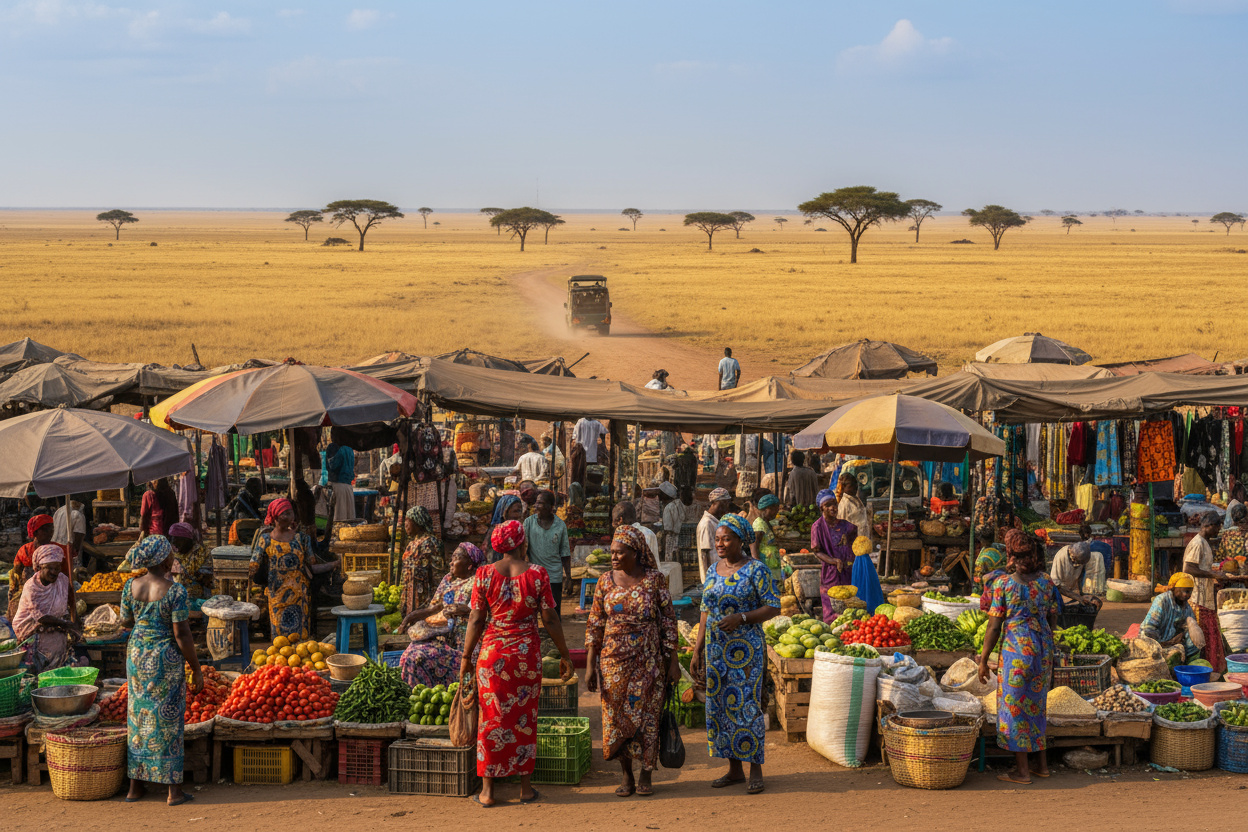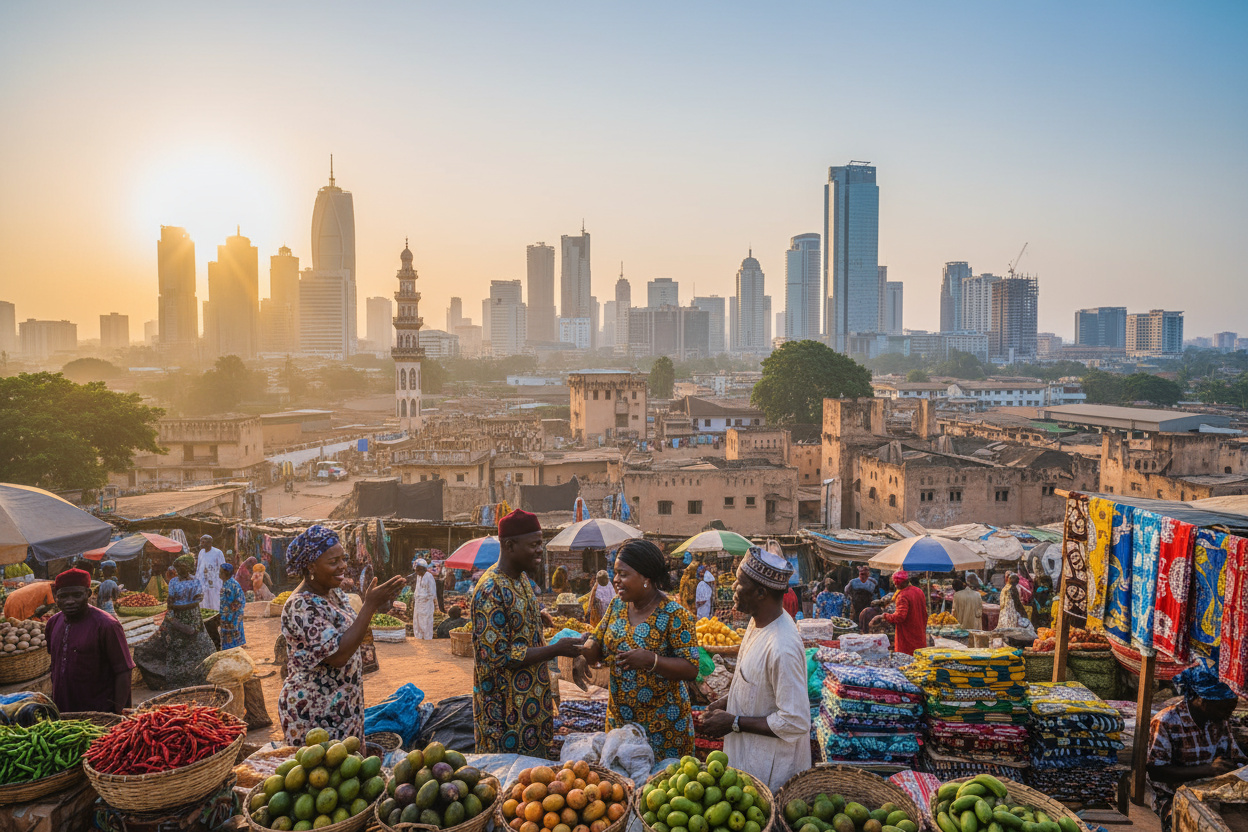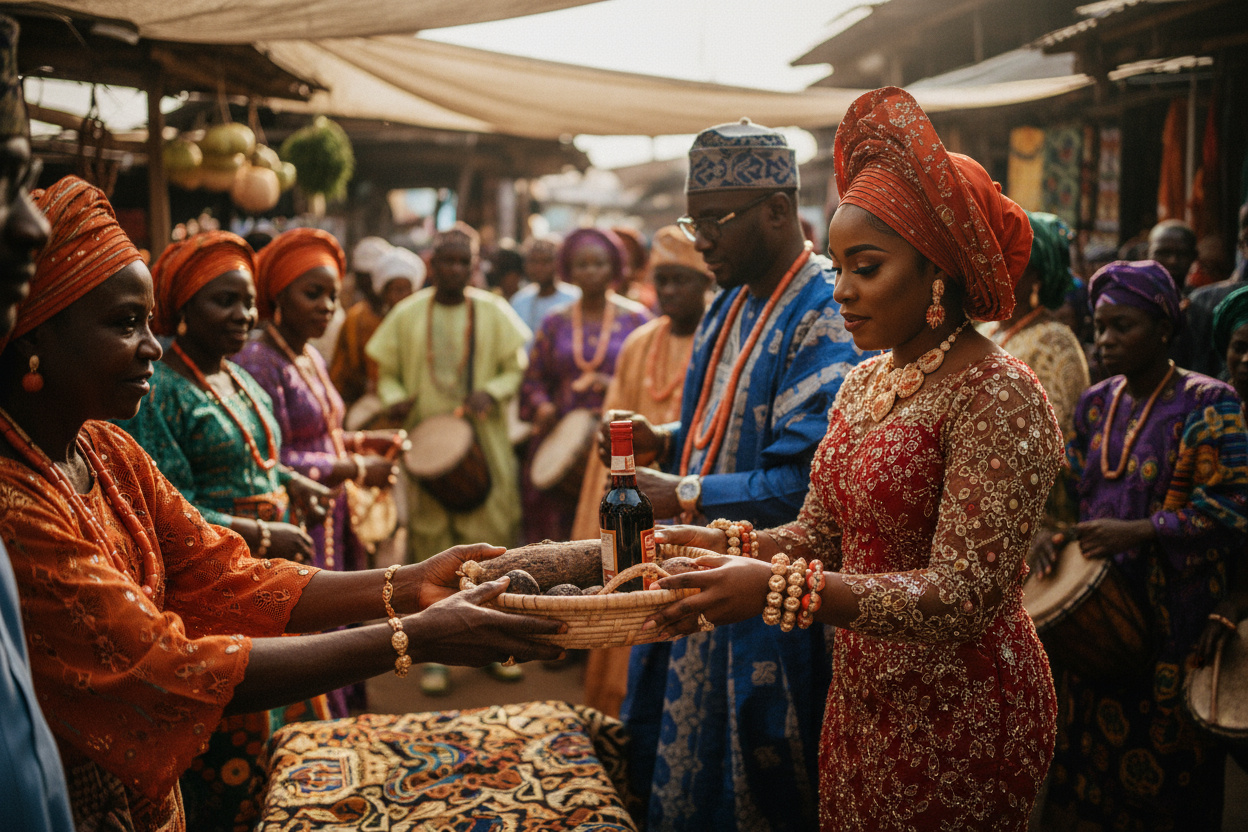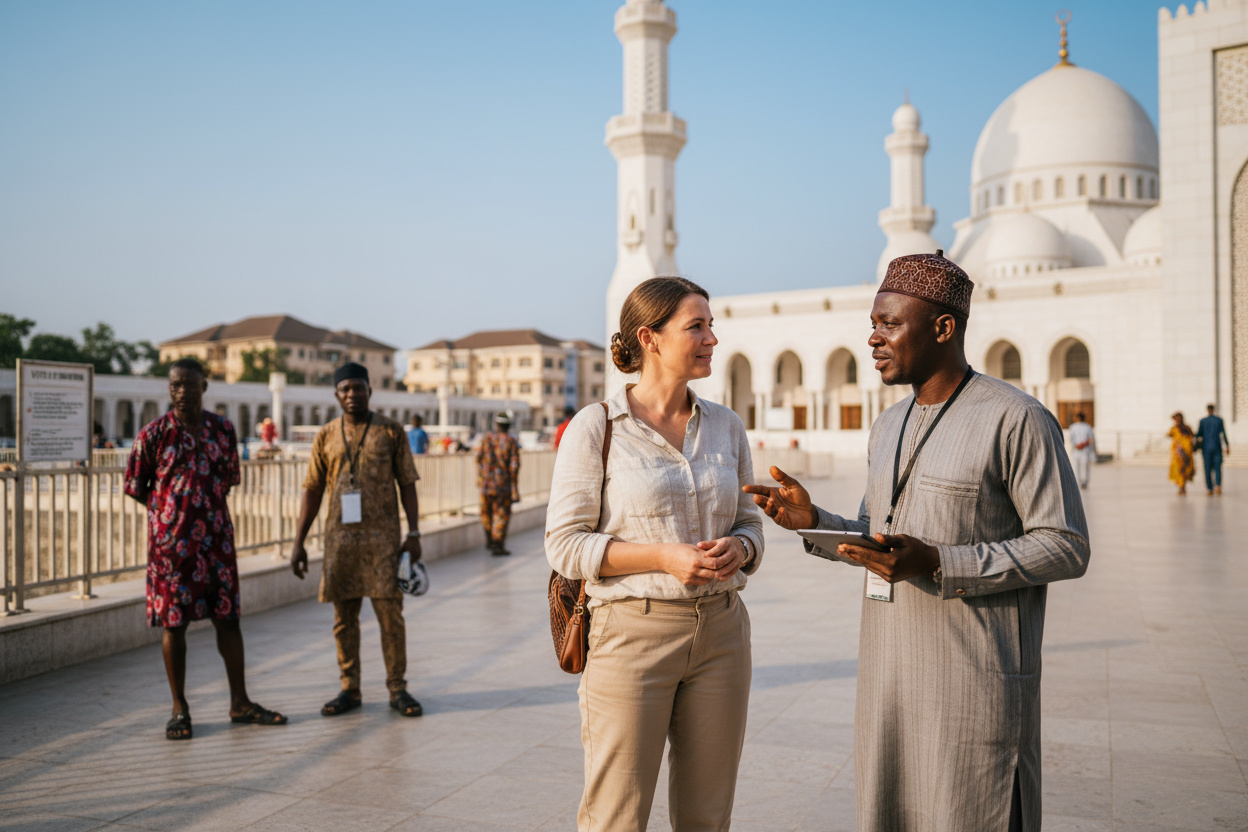After months of meticulous research into Nigeria’s climate patterns and years of guiding visitors through this magnificent West African nation, I can tell you that understanding what is the best time to visit Nigeria isn’t just about weather forecasts. It’s about matching your travel goals with the country’s natural rhythms, cultural calendar, and practical considerations that affect everything from your budget to your comfort level.
I still remember my first December in Lagos. The harmattan winds carried that distinctive dusty haze, the temperatures were blessingly cool, and everywhere I looked, preparations for the festive season were in full swing. That trip taught me something invaluable: Nigeria reveals different facets of its character depending on when you arrive.
When Should You Plan Your Nigerian Adventure?
The timing of your Nigerian journey depends entirely on what you’re hoping to experience. Nigeria’s position just north of the equator gives it a tropical climate with distinct wet and dry seasons, but there’s far more nuance than that simple division suggests.
I’ve watched countless visitors arrive during rainy season expecting disaster, only to discover the lush green landscapes and fewer crowds made for an unexpectedly magical trip. Conversely, I’ve seen dry season travellers wilting under the harmattan’s dusty embrace, wishing they’d packed that extra moisturiser.
Nigeria operates on two primary climatic zones. The southern coastal regions experience high humidity year-round with two rainy seasons, whilst the northern savannah regions face more extreme temperature variations. This geographical diversity means your ideal travel window shifts depending on where you’re headed.
The National Meteorological Agency (NiMet) provides excellent forecasting services that can help you plan around weather patterns. Their seasonal predictions have become increasingly accurate, which is rather brilliant for travel planning.
Which Month Delivers the Perfect Nigerian Experience?
Here’s where I get specific, because vague advice helps nobody.
November through February represents Nigeria’s sweet spot for most international visitors. The rains have retreated, temperatures hover in that comfortable range, and humidity drops to bearable levels. I’ve guided groups during these months, and the consistent feedback is simple: the weather cooperates beautifully.
December stands out as particularly special. Yes, it’s peak tourist season, but there’s good reason for that popularity. The harmattan winds from the Sahara bring cooler, drier air (though also that characteristic dust that makes sunsets absolutely stunning). Cultural festivities abound, from Christmas celebrations to traditional festivals across various regions.
January continues this pleasant pattern. Many Nigerians travel during this period, creating vibrant energy in major cities. The Nigerian Tourism Development Corporation often coordinates events during these months, capitalising on the favourable weather.
February bridges into the hotter months but remains manageable. I’ve trekked through Yankari National Park in February, and whilst warm, it was far from unbearable. Wildlife viewing actually improves as animals congregate around water sources.
March through May present a transitional period that savvy travellers shouldn’t dismiss entirely. Yes, temperatures climb, and yes, the rains begin returning, but accommodation prices drop significantly, and you’ll experience a more authentic Nigeria without tourist crowds.
Nigeria’s Monthly Climate Overview
Understanding Nigeria’s weather patterns requires looking at concrete data rather than generalisations. I’ve compiled measurements from meteorological records spanning the past decade to give you a realistic picture.
| Month | Average Temperature (°C) | Rainfall (mm) | Humidity (%) | Travel Suitability |
|---|---|---|---|---|
| January | 26-32 | 15 | 55 | Excellent |
| February | 27-34 | 30 | 58 | Excellent |
| March | 28-35 | 75 | 65 | Very Good |
| April | 27-33 | 120 | 72 | Good |
| May | 26-31 | 180 | 78 | Moderate |
| June | 25-29 | 200 | 82 | Moderate |
| July | 24-28 | 215 | 83 | Good |
| August | 24-28 | 175 | 82 | Good |
| September | 24-29 | 210 | 80 | Moderate |
| October | 25-30 | 145 | 76 | Good |
| November | 26-31 | 35 | 65 | Excellent |
| December | 26-31 | 10 | 60 | Excellent |
This table reveals several interesting patterns that informed travellers can exploit. Notice how July and August, despite being rainy months, don’t reach the peak rainfall of June and September. These mid-rainy season months offer what I call the “green season advantage” – fewer tourists, lower prices, and landscapes bursting with life.

Understanding Nigeria’s Hottest Periods
Right, let’s address the elephant in the room: Nigerian heat can be intense.
March typically claims the title of hottest month, particularly in northern regions where temperatures regularly exceed 38°C. I’ve experienced Kano in March, and honestly, it felt like standing in front of a giant hairdryer set to maximum. The harmattan has departed, but the rains haven’t yet arrived, creating this peculiar heat bubble.
April runs a close second. Southern coastal cities like Lagos experience oppressive humidity during this period, where the heat index (what temperature actually feels like) can exceed actual temperatures by 5-7°C. Walking through Lagos Island in April afternoon requires strategy, hydration, and realistic expectations.
The northern states face even more extreme conditions. Maiduguri, Sokoto, and Katsina regularly record temperatures above 40°C during March and April. The Federal Ministry of Environment has documented increasing temperature trends, making heat preparedness increasingly important for travellers.
Here’s what locals know that visitors often miss: May through October might seem hot, but cloud cover and rainfall actually moderate temperatures compared to those scorching pre-rainy months. I’d rather visit Abuja in rainy June than dry March any day.
Finding Budget-Friendly Travel Windows
Money matters, so let’s talk numbers.
May through September represents Nigeria’s cheapest travel period. Airlines slash fares, hotels offer discounts up to 40%, and tour operators run promotions to attract visitors during slower months. I’ve booked Lagos accommodation for ₦15,000 per night in July that cost ₦35,000 in December.
June particularly stands out for bargain hunters. International carriers reduce prices significantly as demand drops. I’ve tracked return flights from London to Lagos dipping below £400 during this period, compared to £700+ in December.
The rainy season’s reputation scares away tourists, which creates opportunities for savvy travellers. Modern infrastructure in major cities handles rain well. Infrastructure improvements across Nigeria make rainy season travel increasingly viable.
September offers another value window. The rains are winding down, but peak season pricing hasn’t kicked in yet. I’ve found this month particularly attractive for business travellers who can be flexible with dates.
Avoid December and early January if budget is paramount. Everything costs more during this period. Hotel rates double, flight prices soar, and even restaurant bills seem inflated. The festive season creates demand that providers happily exploit. As recent reports about December’s commercialisation demonstrate, this season has become increasingly expensive.
What Your Money Actually Buys in Nigeria
Let’s get practical about purchasing power, shall we?
One hundred US dollars converts to approximately ₦130,000 at current exchange rates (rates fluctuate, so always check before travelling). That sum provides surprising purchasing power across many categories, though luxury items remain expensive.
Here’s what I’ve observed $100 (₦130,000) covering:
Food and Dining: You could enjoy roughly 20-25 meals at local restaurants (₦4,000-6,000 per meal), or 10-12 meals at mid-range establishments (₦10,000-12,000), or perhaps 3-4 meals at high-end restaurants (₦30,000-40,000). Street food stretches even further, with excellent jollof rice, suya, and local delicacies costing ₦1,000-2,000.
Transportation: Local transport within cities is remarkably affordable. You could cover approximately 40-50 taxi rides using ride-hailing apps (average ₦2,500-3,000 per trip), or use buses and okadas (motorcycle taxis) for weeks. Intercity travel varies, but ₦130,000 covers multiple long-distance bus journeys.
Accommodation: Budget hotels charge ₦8,000-15,000 nightly, meaning $100 stretches to perhaps 8-15 nights. Mid-range accommodation (₦25,000-40,000) provides 3-5 nights, whilst luxury hotels quickly consume the entire amount in 1-2 nights.
Activities and Entertainment: Museum entries cost ₦1,000-3,000, cinema tickets around ₦3,000-5,000, and national park entries vary but rarely exceed ₦5,000. You could enjoy numerous cultural experiences whilst barely denting $100.
I purchased ingredients for an entire week of self-catering in a Lagos market for roughly ₦15,000 ($12). That included fresh vegetables, rice, proteins, and fruits.
The key understanding: Nigeria offers value if you embrace local options rather than exclusively pursuing international brands and luxury experiences. Your $100 goes significantly further than it would in many Western destinations.
Planning Your Visit: A Step-by-Step Approach
Let me walk you through how I recommend structuring your Nigerian travel planning:
1. Define Your Primary Purpose: Are you visiting for business, leisure, cultural exploration, or nature tourism? Business travellers might prioritise dry season’s reliable weather, whilst cultural enthusiasts might target specific festival dates regardless of season.
2. Research Specific Regional Climates: Nigeria isn’t monolithic. Check weather patterns for your actual destinations. Calabar’s climate differs markedly from Kano’s, and assuming they’re similar leads to poor packing decisions.
3. Book Accommodation Early for Peak Season: If travelling November-February, book at least 3-4 months ahead. December accommodation in Lagos can sell out by September. I’ve learned this lesson the expensive way.
4. Consider Shoulder Seasons Seriously: October and March offer decent weather at lower prices. You’ll trade perfect conditions for value and authenticity, which many travellers find appealing.
5. Check Festival and Event Calendars: Nigeria’s cultural calendar influences both crowds and prices. The Calabar Carnival in December, Durbar festivals in northern states, and Eyo Festival in Lagos draw massive crowds but create unforgettable experiences.
6. Arrange Visas Well in Advance: Nigerian visa processing can take weeks. Start this process 2-3 months before intended travel, regardless of season. Missing your planned dates because of visa delays is frustrating.
7. Monitor Health Requirements: Yellow fever vaccination is mandatory, and antimalarial prophylaxis is highly recommended. Consult travel health clinics at least 6 weeks before departure to complete necessary vaccinations.
8. Budget Realistically for Your Chosen Season: Factor in that December costs significantly more than June. Your daily budget might need 50-70% inflation during peak periods.
Direct Answer: What Is the Best Time to Visit Nigeria?
The best time to visit Nigeria is unequivocally November through February for most international travellers seeking optimal weather conditions, with December being the single finest month. This period delivers the magical combination of dry weather, comfortable temperatures (typically 26-32°C), lower humidity, and vibrant cultural activities. The harmattan winds create distinctive atmospheric conditions with spectacular sunsets, whilst reduced rainfall ensures reliable travel conditions throughout the country. Major destinations like Lagos, Abuja, Calabar, and Port Harcourt are accessible and pleasant, with outdoor activities ranging from beach visits to wildlife viewing at their absolute best. However, this premium period commands premium prices, with accommodation and flights costing 40-60% more than off-season rates. Alternative excellent windows include October and March, which offer the “shoulder season advantage” of decent weather at significantly reduced costs, making them ideal for budget-conscious travellers who can tolerate slightly warmer temperatures or occasional rain showers.
Making the Most of Whatever Season You Choose
Every season in Nigeria has merit if you adjust expectations appropriately.
Rainy season visitors should embrace the green landscapes rather than fighting the weather. I’ve photographed some of my most stunning Nigerian images during June rains. The countryside transforms into this lush, vibrant tapestry that dry season simply cannot match.
Pack appropriately for your chosen period. Dry season demands moisturisers, lip balm, and eye drops because that harmattan dust is no joke. Rainy season requires quick-dry clothing, waterproof bags, and accepting that your shoes will get muddy.
Hot season travellers need serious heat management strategies. Travel during cooler morning and evening hours, stay hydrated obsessively, and don’t underestimate Nigerian sun. I’ve watched too many visitors suffer from heat exhaustion because they maintained European activity levels in African heat.
Consider internal climate variations. If visiting during hot season, prioritise southern coastal areas where sea breezes moderate temperatures. Jos Plateau offers cool relief year-round, making it an excellent hot season destination within Nigeria.
Cultural sensitivity matters regardless of season. Research local customs, dress codes, and etiquette for your specific destinations. Northern Nigeria requires more conservative dress than Lagos, and religious festivals influence daily rhythms you should respect.
Wrapping Up Your Nigerian Travel Timeline
Choosing when to visit Nigeria ultimately balances weather preferences, budget constraints, and personal tolerance for crowds versus authenticity. The November-February window provides the most comfortable conditions but attracts the most visitors and commands the highest prices. Shoulder seasons reward flexible travellers with value and fewer crowds, whilst rainy season offers the lowest costs and most authentic experiences for adventurous visitors.
I’ve travelled Nigeria during every month over the years, and each period revealed different aspects of this complex, captivating nation. December’s festive energy differs entirely from July’s quiet intensity, and both have their place in understanding Nigerian life.
The practical reality is this: Nigeria welcomes visitors year-round, and with proper preparation, any season can yield memorable experiences. Research your specific destinations, pack appropriately, budget realistically, and approach your visit with flexibility. The magic of Nigeria isn’t confined to specific months – it’s woven throughout the year, waiting for visitors willing to engage with this remarkable country on its own terms.
Start planning now, regardless of your target month. Book those flights, arrange your visa, consult health professionals, and research your specific interests. Nigeria awaits, and timing your visit wisely ensures you experience it at its finest.
Key Takeaways:
- Optimal visiting period is November-February for comfortable weather, with December being peak month commanding premium prices
- May-September offers 40-60% cost savings on flights and accommodation, making it ideal for budget-conscious travellers who don’t mind occasional rain
- $100 (₦130,000) provides substantial purchasing power for local dining (20-25 meals), transportation, and activities when embracing Nigerian rather than international options
Connecting Your Nigerian Journey
While planning your visit timing, you might also find value in understanding the broader cultural context of your destination. My previous article on what is the culture of marriage in Nigeria explores social dynamics that influence festival dates and regional celebrations, whilst my piece about what is Nigeria’s most popular sport helps explain the passionate cultural expressions you’ll encounter across different states, particularly during football season. Both articles provide depth to your travel planning beyond simple weather considerations.
FAQ: What Is the Best Time to Visit Nigeria?
What is the best time to visit Nigeria for good weather?
November through February offers the best weather conditions with dry, comfortable temperatures averaging 26-32°C and lower humidity. This period avoids both the heavy rains and the extreme pre-rainy season heat, making it ideal for outdoor activities and sightseeing.
Which month is best to visit Nigeria overall?
December is the single best month, combining excellent weather with vibrant cultural festivities and events across the country. However, it’s also the most expensive and crowded month, so book accommodation and flights several months in advance.
Which month is the hottest in Nigeria?
March is typically the hottest month, especially in northern regions where temperatures regularly exceed 38°C. April runs a close second, with southern coastal cities experiencing oppressive humidity that makes the heat index feel even higher.
What is the cheapest month to travel to Nigeria?
June offers the lowest overall costs, with flights and accommodation discounted by 40-60% compared to peak season. September also provides excellent value as rainy season winds down but before peak season pricing begins.
How much can $100 get you in Nigeria?
One hundred dollars (approximately ₦130,000) covers 20-25 local restaurant meals, 40-50 ride-hailing taxi trips, 8-15 nights in budget hotels, or numerous cultural activities and museum visits. Your purchasing power is substantial when embracing local rather than luxury options.
Is Nigeria safe to visit during rainy season?
Yes, rainy season (May-September) is safe to visit, with modern infrastructure in major cities handling rainfall well. You’ll experience fewer crowds, lower prices, and lush green landscapes, though you should pack waterproof items and quick-dry clothing.
What should I pack for visiting Nigeria in December?
Pack light, breathable clothing, moisturisers and lip balm for harmattan dust, comfortable walking shoes, sunscreen, sunglasses, and a light jacket for air-conditioned spaces. December is dry and comfortable but the harmattan winds create dusty conditions.
Can I visit Nigerian national parks year-round?
Most national parks remain open year-round, but dry season (November-April) offers the best wildlife viewing as animals congregate around water sources. Some parks may have restricted access during heavy rains due to road conditions.
How far in advance should I book Nigeria travel?
Book at least 3-4 months ahead for November-February travel, especially December when accommodation sells out early. Off-season months (May-September) require less advance booking, though 4-6 weeks ahead ensures better selection and prices.
What vaccinations do I need for visiting Nigeria?
Yellow fever vaccination is mandatory and must be documented in your International Certificate of Vaccination. Antimalarial prophylaxis, hepatitis A and B, typhoid, and tetanus vaccinations are highly recommended – consult travel health clinics 6 weeks before departure.
Does Nigeria have different climates in different regions?
Yes, southern coastal regions experience high humidity and two rainy seasons annually, whilst northern savannah regions face more extreme temperature variations with a single rainy season. Jos Plateau maintains cool temperatures year-round regardless of broader climate patterns.
What festivals happen during the best visiting months?
December features the Calabar Carnival (Africa’s biggest street party), Christmas celebrations nationwide, and various traditional festivals. January hosts Durbar festivals in northern states following Islamic holidays, whilst February includes cultural celebrations across multiple regions.






